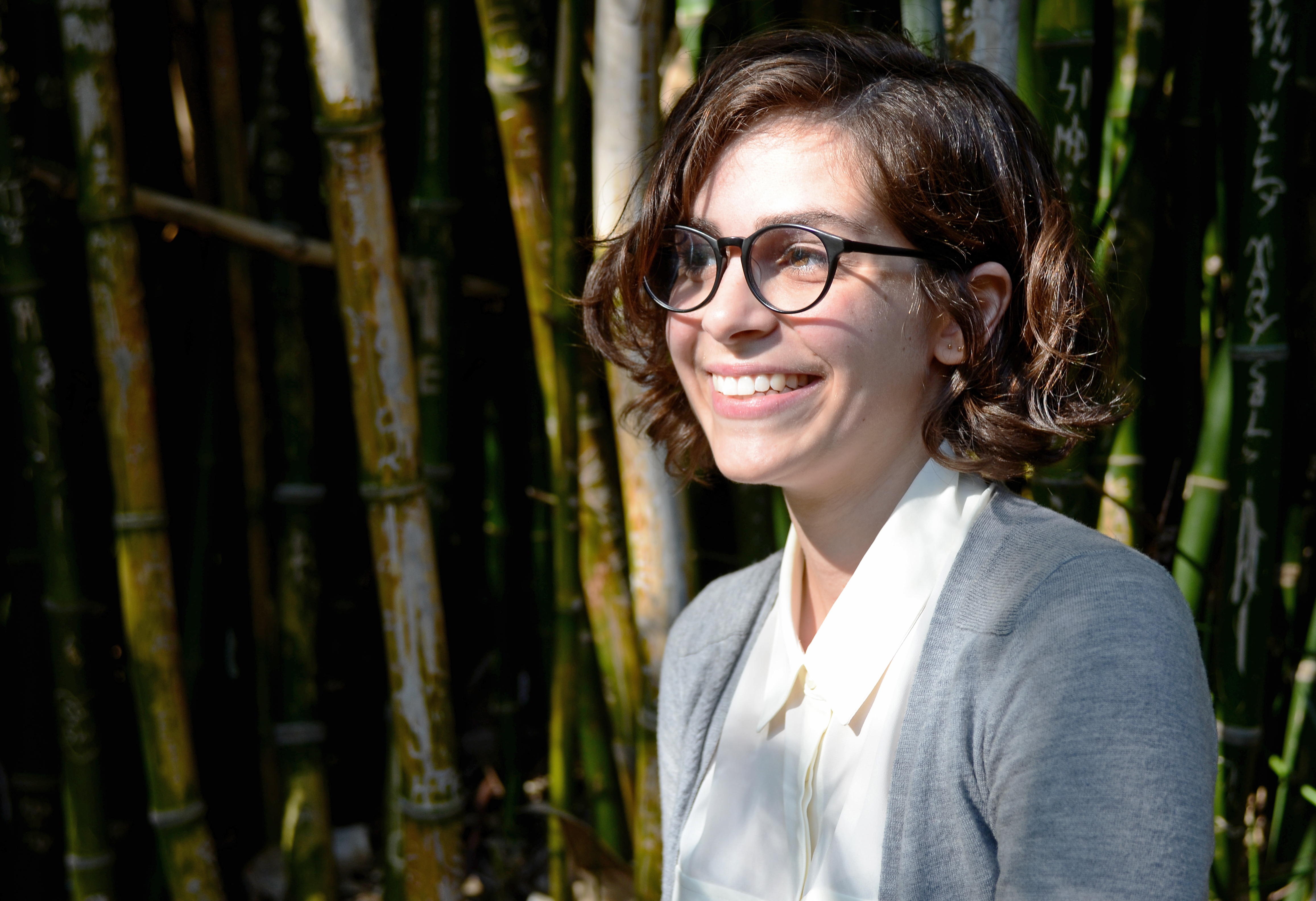Researcher fuses science and art

Christina Agapakis, a UCLA researcher who studies synthetic biology and the intersection of science and other fields like art and design, was recently named one of Forbes “30 under 30” for science and health care.
By Kanav Saraf
Feb. 21, 2013 12:25 a.m.
The original version of this article contained multiple errors and has been changed. See the bottom of the article for additional information.
As a child, Christina Agapakis would visit science museums with her parents and participate in science competitions.
Eventually, she incorporated these interests and her passion for the intersection of science with other fields, into her career.
Agapakis, a postdoctoral fellow at UCLA, was recognized on the Forbes “30 under 30” list for 2012 in science and health care for her work in synthetic biology, which she describes as modifying living things to do something they don’t normally do.
Agapakis – who is also a 2012 L’Oréal USA Women in Science Fellow – works in the lab of Professor Ann Hirsch in the molecular, cell and developmental biology department.
Her research at UCLA focuses on how the relationship between bacteria and other organisms, including humans, can be an interesting source for engineering – specifically the mutually beneficial relationship between bacteria and plant roots.
Agapakis said she became interested in biology and biochemistry while pursuing an undergraduate degree in molecular, cellular and developmental biology at Yale University. She said she loved her organic chemistry class and ended up working in her organic chemistry professor’s lab.
After completing her doctorate at Harvard University in 2011, Agapakis came to UCLA, where she said she has been working on many different projects.
She said she was attracted to UCLA because of its strong technology, science, art and social science departments. When she came to campus, she started out looking for opportunities to continue in synthetic biology and branch out into art, social science and the politics of science.
“I have always been interested in art, and synthetic biology as a design of living things,” Agapakis said. “It has inspired a lot of artists and designers to think about technology and implications of that technology.”
For example, at Harvard Agapakis applied to a “Synthetic Aesthetics” program, which was sponsored by the University of Edinburgh and Stanford University, and was paired with an artist who studied odors, she said.
Through the program, Agapakis said she was able to find answers to questions like why people think body odor caused by bacteria in toes and armpits is disgusting, but the same bacteria in cheese is delicious and wonderful.
The program spurred her interest in the combination of design and science – topics she is now working to bring together at UCLA.
Agapakis’ research in the field has also led her to blogging.
“I find it a great opportunity to meet people and communicate with researchers who are interested in different topics, and for me to learn about new things,” she said.
She said writing has been an important part of her career in order to explore different topics outside of her research focus.
“(Agapakis) is so enthusiastic that it made me interested in synthetic biology,” said Chelsea Hu, a fifth-year chemical engineering student. Hu was one of the students Agapakis helped teach in fall 2011 in a course called “Molecular Biotechnology for Engineers.” Hu later went on to work under Agapakis in Hirsch’s lab.
Hu said Agapakis inspires her to be a scientist and she hopes to be like her someday.
“(Agapakis) is unique because she always asks me to work smart instead of just working hard,” Hu said.
Rita Blaik, a graduate student in the UCLA Department of Material Sciences and Engineering, said she met Agapakis through the Art|Sci Center. Blaik said she is glad Agapakis is starting to gain recognition for the work she does.
“(Agapakis) is so good at communicating science to people in a way that is really fun and interesting,” she added.
Agapakis said her next project will be to teach arts and design to science students, and biology to design students. By teaching design students biology, she said she hopes to see how they utilize this scientific aspect in their designing.
“(I want to) bridge both communities to create something new,” she said.
Correction: Rita Blaik met Christina Agapakis through the Art|Sci Center. Also, the “Synthetic Aesthetics” program was sponsored by the University of Edinburgh and Stanford University.


